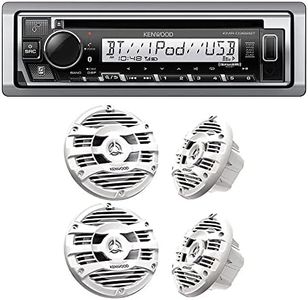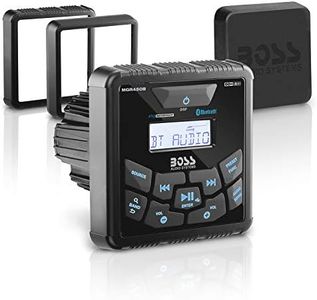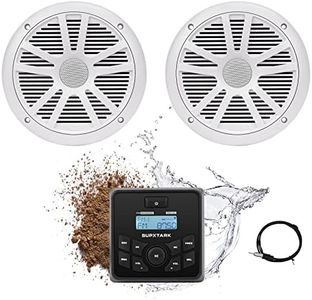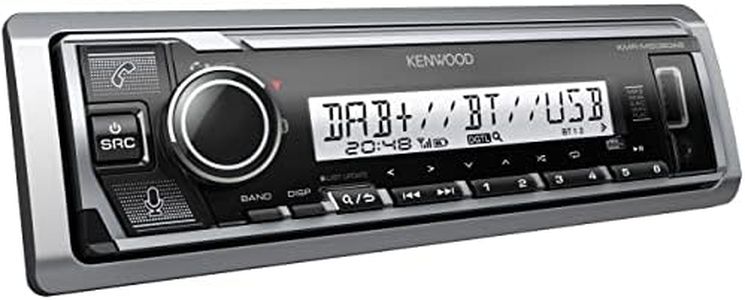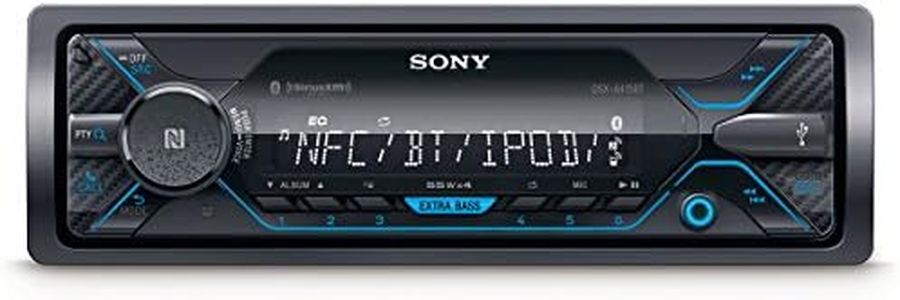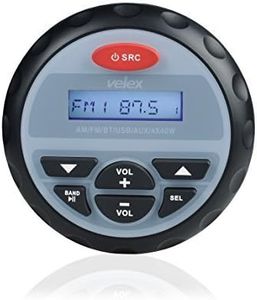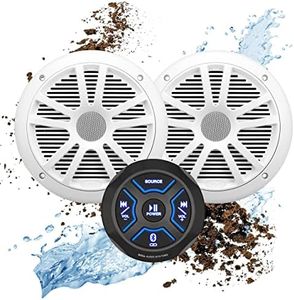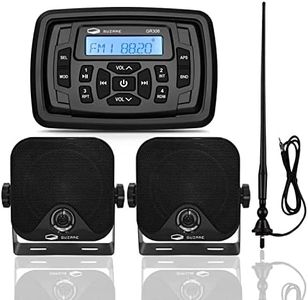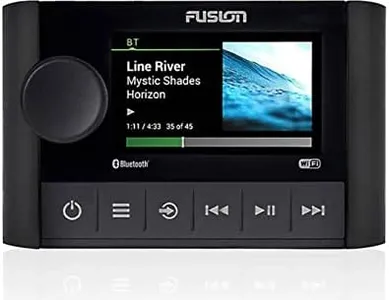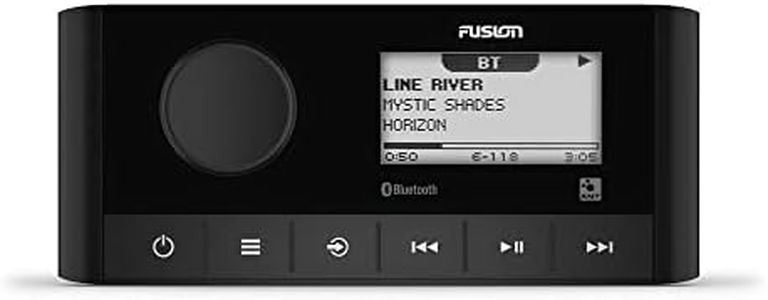We Use CookiesWe use cookies to enhance the security, performance,
functionality and for analytical and promotional activities. By continuing to browse this site you
are agreeing to our privacy policy
10 Best Marine Stereo Receivers
From leading brands and best sellers available on the web.Buying Guide for the Best Marine Stereo Receivers
Choosing a marine stereo receiver involves understanding that this type of device is built specifically for use on boats or in environments where exposure to water, salt, and harsh weather is common. When looking for the best fit, your main goal is to ensure the receiver will survive and perform reliably in these conditions while providing the features and sound quality you want. It's important to focus on durability, water resistance, and connectivity. Think about how you plan to use the system: Do you want to listen quietly while fishing? Host loud parties onboard? Stream music from your phone? The way you use your boat, the size of the space, and your musical needs should guide your decision.Waterproof and Weather Resistance RatingsThis spec tells you how well the stereo can handle exposure to water and extreme conditions. The most common rating is IPX (like IPX5 or IPX7), which ranges from splash resistant to fully submersible. If you know the stereo will be exposed to lots of spray or rain, you’ll want a higher IPX rating for peace of mind. For areas that stay relatively dry, lower ratings might suffice. Choose based on how wet the environment will get and how much weather protection you realistically need.
Corrosion ResistanceSince marine environments are tough because of humidity and salt, this spec marks whether the internal parts and connectors use rust-resistant materials. Better corrosion resistance means longer life and fewer problems in salty air. If your boat is used in saltwater areas, prioritize this. For freshwater, it's still important, but perhaps slightly less critical.
Power OutputThis refers to how much wattage the stereo delivers to the speakers, usually measured in watts per channel. Higher wattage provides louder, clearer sound, which is helpful on open water where noise levels are higher. Smaller boats or quiet settings can do fine with lower power. If you want music that can be heard over the engine or across a large deck, look for higher watt ratings.
Connectivity OptionsThis covers how you get music or audio into the receiver—Bluetooth for wireless streaming, USB for plug-in devices, AUX inputs, and traditional radio (AM/FM) as well as satellite or weather band. Bluetooth is great for modern convenience, but radio and weather channels can be valuable at sea. Pick what matches how you want to use it: frequent streaming means prioritize Bluetooth, but if you love radio or have old media, make sure those features are there.
ExpandabilityExpandability covers whether you can add extra components like more speakers or external amplifiers. Some stereos handle more channels or zones, perfect if you want sound in specific areas of a large boat. Think about if you want to start small and upgrade later, or if you’re outfitting a big yacht needing multiple audio zones—choose one with the right connections and capability for your plans.
Display and ControlsA marine receiver's screen should be easy to read in bright sunlight and at awkward angles. Larger or backlit displays help with glare and darkness. Some offer waterproof remotes or compatibility with control apps. If you'll be adjusting settings frequently or from a distance, these features will make life easier on the water.
Installation FootprintThis refers to the size and shape of the stereo unit and how it fits into your boat’s dashboard. Space can be tight, so make sure the one you choose will fit the slot or area you have, and check if it needs extra brackets or modifications to install. Always confirm measurements before buying to avoid headaches during setup.

